Book review: Thus Saith Eve
by Chris Wind
★★★★★
This little book finally gives the women of the Bible license to speak, and speak they do! A cantankerous bunch on the whole, yet their contributions (as true as they may be) left me ROFLing. Our Bible, I’m now convinced, is much the poorer for its women being silenced.
There are nineteen chapters, nineteen women in all who get to have their say. Technically speaking, only fifteen of the nineteen speakers are “women of the Bible.” Two are extra-canonical, one is a dastardly angel (we call “her” Satan), and one is … well, I was equally astonished to learn that Abel, son/daughter of Adam, also made the feminine list. Can’t say I didn’t learn anything from this book.
My favorite was Noah’s wife. Poor thing, with a ship the size of the football field to clean, and animal excrement everywhere. Yet, she seems quite able to hold her own, and as she rightly points out, if the whole creation was destroyed by a flood, then she is mother to us all. (What she leaves unsaid is whether or not Noah is the father of us all … hmmm.)
Short, but definitely entertaining … and serious between the lines.

Matthew 25:25, How Much is a Talent?
And I was afraid, and went and hid thy talent in the earth: lo, there thou hast that is thine.
//In this parable, a man travels to a foreign country, but before he leaves, he gives talents to his servants. Ten to one, five to another, one to a third.
Do you picture a talent as a small, silver coin? If you do, you miss the flavor of the parable. A talent is formed in the shape of a huge ingot; that is, a heavy weight with a handle on top for ease of transport. A talent weighs 75 pounds; over 34 kilograms. A strong man can lug one in each hand. It weighs 6,000 denarii and represents the salary of 6,000 days’ work. Sixteen and a half years.
Now we can read over the story with a new understanding. First, these talents are not on loan. They are freely given. Ten talents would provide enough for the servant to live adequately for another 165 years! Five talents would do for 82 more years! The abundance of the gift is important to the story. These servants gladly accept the gift, and put it to good use, doubling what they have been given.
Then we come to the third servant, who received only one. This man does not seem to appreciate it as a gift; rather it is an incredible responsibility! He sees it as nearly more than he can bear, keeping this talent for the day his master returns and he can give it back. How on earth can he hide an entire talent? He finds a way, burying it in the ground.
Now that you understand the dynamics of the story, I’m guessing the parable will speak to you in a different way.
Got an opinion? 9 commentsBook review: The Galilean
by Tom Colgan
★★★★
A play, well-written and well-acted, should first and foremost touch the heart. This one does. Yet, imagination is always necessary when reading plays; its appreciation depends upon the reader’s ability to soak up the poetic speech and hear it from the lips of imaginary stage actors. That’s how Colgan’s writing comes alive.
The story opens in an age of great expectation. John the Baptist fuels the apocalyptic fire of his followers, teaching them to watch for the arrival of the Messiah. Everybody knows something is about to happen. Something big, something God has planned from the beginning. God is about to intervene in history.
Enter Jesus, the Galilean. A man who, two thousand years later, everyone knows by legend, but nobody knows as a person. Colgan, a former Methodist minister who brings sixteen years of research into the Historical Jesus, offers a realistic, yet inspiring portrayal. In his mind, Jesus was a Jew with a radical vision, a deep longing to revitalize his nation to a new way of thinking. A way of compassion. Jesus teaches love for everyone; sinner, sickly, and saint.
While everyone watches for God’s big intervention, Jesus wonders if everyone is missing it. What a pity if God’s great transformation goes unnoticed? Jesus seeks to bring God down from heaven and make Him accessible to the multitudes. But his vision clashes with the institutionalized religion of the Temple class.
A showdown is coming, and the disciples fear for Jesus’ safety. But Jesus fears not death; he fears something else entirely. The Galilean will leave you wondering, quite seriously, whether Jesus’ greatest fear came to pass … and what can be done to set things right.

1 Samuel 5:6, Golden Mice and Hemorrhoids
And the hand of Jehovah was heavy upon them of Ashdod, and he laid them waste, and smote them with hemorrhoids. (Darby translation)
//One day, the hated Philistines captured the Ark of the Covenant and brought it home to the temple of their god, Dagan. The next morning, they awoke to find their god face down, bowing before the Ark. So, they set the statue back up. Again, the next morning, Dagon is prostrate on the ground, this time with his head and arms chopped off.
But the Ark isn’t done toying with the Philistines. It smites all the people of the city, Ashdod, with hemorrhoids. So, the Philistines move the ark to Gath. Now all the Gathites develop hemorrhoids.
Finally, the Philistines come to their senses, and send the Ark home. But not empty. As an apology, they prepare gifts of golden images to send with the Ark. Images that have puzzled scholars for some time.
Then [the Philistines] said, What is the trespass-offering which we shall return to him? And they said, Five golden hemorrhoids, and five golden mice, the number of the lords of the Philistines; for one plague is upon them all, and upon your lords. And ye shall make images of your hemorrhoids, and images of your mice that destroy the land, and give glory to the God of Israel: perhaps he will lighten his hand from off you, and from off your gods, and from off your land.
Today’s puzzle: What does a golden hemorrhoid look like?
Book review: The Teaching of the Twelve
by Tony Jones
★★★★
Every Christian should read the Didache (DID-ah-kay). Every one. You can read the whole thing in twenty minutes, so you have no excuse.
Didache simply means teachings. By our best guess, this is the earliest Christian literature not in the Bible. It probably predates one or more Gospels, and may be made up of about four separate writings. The opening portion appears taken directly from the Q source. So early are the teachings of this Didache community that they show no indication of familiarity with any Pauline writings.
The Didache is not a book about believing, but about living. It’s not about evangelizing, but about being a neighbor. It’s a guidebook about how to share the Eucharist, how to give alms, how to baptize, how to appoint elders and treat prophets, and more. You won’t read anything about miracles, the twelve disciples, the crucifixion, or the resurrection. It’s just about how to be a Christian.
Jones relates the words of the Didache, provides a short, inspirational analysis, and relates how a group of Christians he knows has taken its teachings and humbly formed a community determined to return to the simple, compassionate teachings of the early church.

Mark 5:2, One Man or Two? Part II of II
When Jesus got out of the boat, a man with an evil spirit came from the tombs to meet him.
//Two days ago, I gave an example where Matthew changes the story of one blind man (Bartimaeus) into a story of two blind men. In case you don’t believe this is intentional, here’s another example. You all know this story well, about the man living among the tombs, out of whom Jesus cast a swarm of evil spirits. In fact, the man’s name was Legion, because of the many evil spirits inhabiting him. Jesus chases them out into the pigs, and the pigs rumble pell-mell down the hill into the lake, where they drown.
So. What do you suppose the man’s name is in Matthew’s version? I bet you never noticed … according to Matthew, there is no name given, because there are two demon-possessed men in his story!
Matthew 8:28, When he arrived at the other side in the region of the Gadarenes, two demon-possessed men coming from the tombs met him. They were so violent that no one could pass that way.
In Mathew’s rendition, Jesus does the same thing, casting the demons out into the pigs. Do you find it odd that Matthew would so fecklessly change one person into two? You shouldn’t. Matthew loves to double his characters; it appears to be a unique literary style of his. In Matthew 9:27, like the verses presented two days ago, Matthew again has two blind men. In 4:28-21, he calls his disciples in pairs of brothers (Simon/Andrew, and James/John). In 26:37, he alone again refers to James/John as “the two brothers.” In 26:20, he alone mentions “two false witnesses.”
I don’t have an explanation for this literary habit, but I would enjoy hearing your opinions.
Got an opinion? 0 commentsBook review: Hell Yes / Hell No
by John Noe, Ph. D.
★★★★★
Is God really going to banish the majority of his creation to eternal torment? Well, to start with, what and where is this eternal torment? Noe starts his in-depth study by discussing four words in the Bible that have been translated in different versions of the Bible as “hell.” These four words are Gehenna (the garbage dump outside Jerusalem, where the fire burns non-stop), Sheol (the realm of the dead as they await resurrection, primarily in the Old Testament), Hades (which Noe labels as the Greek equivalent of Sheol), and Tartarus (referenced only in 2 Peter as a place of banishment for sinful angels.) This mismatch of meanings hardly lends strength to the doctrine of eternal damnation. Is today’s understanding of hell merely a Christian invention?
Christian Universalists have a hard time believing a God of Love could be so cruel as to torture anyone for an eternity. Thankfully, a number of verses in the Bible give a different picture; a picture of universal acceptance into heaven. Noe provides a very impressive, scriptural study of both sides of the argument. Recognizing that each side has an exhaustive battery of “proof verses,” and that scripture itself reminds us we are delving in a great mystery (see Romans 11:33-36), he cautions us against disregarding contrary opinions, and suggests we proceed with a high degree of humility.
While Mr. Noe and I will never be exactly on the same page (he “is not and has never been a liberal Christian” while I am precisely that), I am awed by his research. I can respect Noe’s Sola Scriptura stance so long as he takes a good, hard, scholarly look at what the scriptures really say (and do not say!), and this he has done. The key word in this argument, undoubtedly, is the word “all.” When the Bible says, “all,” does it really mean all?
Christ gave himself a ransom for all men.
For the grace of God that brings salvation has appeared to all men.
In the last days, God says, I will pour out my Spirit on all people.
I bring you good tidings of great joy, which shall be to all people.
The examples of universal language in the scripture are numerous. Underlining this topic is one all-important question: Why did Jesus die? Especially in the minds of Universalists, who posit that everybody eventually winds up in heaven anyway. You may begin to think about the redemptive power of the Cross a little differently after this study with Noe. Consider, for example, Paul’s comparison of Adam to Christ: “So it is written, ‘The first man Adam became a living being’; the last Adam, a life-giving spirit.” Christian Universalists now charge, “if people are burning in hell, Adam did not foreshadow Christ, he eclipsed Him … religion makes Adam more powerful than Christ.”
Noe proposes a reevaluation of the texts, and mediates a sort of reasonable vote on various topics. Perhaps by tallying up the strengths of the Universalist texts against the strength of the Exclusivist texts—bearing in mind what we have learned about the Greek words and meanings behind what has often been translated as hell—we can reach a conclusion.
It’s no slam dunk. In fact, the voting results in a push, until Noe introduces a tie-breaker topic titled God’s Revealed Character and Nature. Under this topic, he lobbies for a kind and loving God, based on the weight of scripture that describes God as someone who would never banish anyone to eternal torment. The scales are thus tipped in favor of Universalism … as we guessed all along.
Engaging, interesting, intelligent, thought-provoking, this is a book every Christian should read. But I cannot leave this topic without reminding you of Noe’s beginning assumption, a trust that scriptures are divinely inspired and internally consistent. This is me talking from here on; not Noe.
I can respect Noe’s desire to give equal weight to all scripture, but this is the very reason these arguments crop up. It’s not that the scriptures are ambiguous—common sense can usually determine what the author has in mind to say—it’s that in places they are flat-out contradictory. This study highlights this problem very well.
The majority of the Universalist texts derive from Pauline writings. The original Paul, not later pseudo-Pauline writings such as II Thessalonians. Paul, I confess, may have been a Universalist—though, whether in his beliefs or in his dream for mankind I cannot tell. Matthew, with his repeated divisions and images of punishment and gnashing of teeth, is most certainly an Exclusivist … and a terrifying one, at that.
So if we are to take a vote to decide whether the doctrine of Exclusivity or the doctrine of Universality is correct, here is how I think we should be voting, recognizing that different writers held different opinions:
Is Paul right or wrong?
Is Matthew right or wrong?
Is Hebrews right or wrong?
Is James right or wrong?
Or do we scrap them all, and go with Revelation’s afterlife vision of a bodily resurrection and a kingdom established on the earth?
Regardless of my differences with Noe, this is a study that’s worth the effort, and Noe tackles it in fair and scholarly fashion. Five stars, for sure.

Mark 10:46-47, One Man or Two? Part I of II
Then they came to Jericho. As Jesus and his disciples, together with a large crowd, were leaving the city, a blind man, Bartimaeus (that is, the Son of Timaeus), was sitting by the roadside begging. When he heard that it was Jesus of Nazareth, he began to shout, “Jesus, Son of David, have mercy on me!”
//Matthew tells the same story, but with a difference:
Matthew 20:30, Two blind men were sitting by the roadside, and when they heard that Jesus was going by, they shouted, “Lord, Son of David, have mercy on us!”
Which version is historically correct? One blind man or two?
Answer: you’re missing the point, if you ask this question. In both Matthew and Mark, this story of Jesus’ healing the blind is prefaced by the story of the sons of Zebedee, James and John, who wanted to sit on the left and right of Jesus when Jesus came into his glory. Matthew, in retelling the story of Bartimaeus, picks up on the context, and uses his literary liberty to turn the passage into a spiritual lesson. In Matthew, the story of one blind man, Bartimaeus, has become the story of two blind men … and the two men are James and John.
More on one becoming two in a couple days …
Got an opinion? 0 commentsBook review: The Historical Reliability of the Gospels
by Craig Blomberg
★★★★
In an era when it’s trendy to question everything written in the Bible, here’s a scholarly exception. Blomberg is a conservative who isn’t content to found his faith on faith alone. After a run-down of the latest methods of Biblical analysis, he tackles three primary “problems” for scholarly believers:
[1] Miracles, and the problem of credibility. This may be Blomberg’s weakest argument, where he is reduced to concluding that if the resurrection really happened, then surely none of the other stories are that incredible!
[2] Contradictions within the three Synoptic Gospels. Perfect harmonization is an unreasonable expectation, and even if errors do exist (Blomberg does not admit to any, but confesses the possibility) then that may explain some of the apparent contradictions.
[3] The problem of John’s Gospel. What are we to make of this maverick writing? It seems to argue against the Synoptics at every turn, and repeatedly insists upon eyewitness testimony. Blomberg’s take (which I’m oversimplifying) is basically, “Let John be John;” the apparent contradictions are not severe enough to discredit either John or the Synoptics.
Blomberg then discusses the Jesus tradition outside the Gospels. What do the remaining books in the New Testament say about Jesus? What do the extra-canonical writings say? What do non-Christians say? He concludes that they reinforce the Gospel story.
So are the Gospels reliable history? Some Christians would affirm this merely because their doctrine of the inspiration of scripture requires them to, but Blomberg believes the Gospel story can stand on its own. He finds it neither a slam-dunk for or against historical reliability, but rather a topic deserving of serious scholarship, and certainly not a barrier to conservative Christian faith.

Revelation 12:1, 12:3, Signs in Heaven
A great and wondrous sign appeared in heaven: a woman clothed with the sun, with the moon under her feet and a crown of twelve stars on her head. … Then another sign appeared in heaven: an enormous red dragon with seven heads and ten horns and seven crowns on his heads.
//These two “signs in heaven” set the stage for the cosmic battle of Revelation chapter 12. John first introduces us to a “woman clothed with the sun.” She cries out in pain, about to give birth. But then a second sign appears, a fearsome looking dragon who “sweeps the stars out of the sky,” and then stands nearby, waiting for the birth, so that he can devour her child.
The child, we are to assume, is Jesus, and the fearsome dragon is Satan. Images of King Herod also spring to mind, as he lies in wait to kill the baby Jesus. The woman clothed with the sun is often compared to Mary, and though I personally doubt this is the intended association, I won’t go into that here.
But the dragon’s plan is foiled. As Jesus is born, he is snatched “up to God and to his throne,” who apparently lives above the stars.
These “signs in heaven” surely reflect astronomical observations, and can even pinpoint the time of year to September/October. For twenty days out of the year, the sun “clothes” Virgo, the woman, by appearing in her midsection. At the same time, Scorpio’s claws seem about to catch her. And as the sun appears in Virgo, of course, the stars of that constellation cannot be seen; they have been “swept from the sky.”
Got an opinion? 2 comments

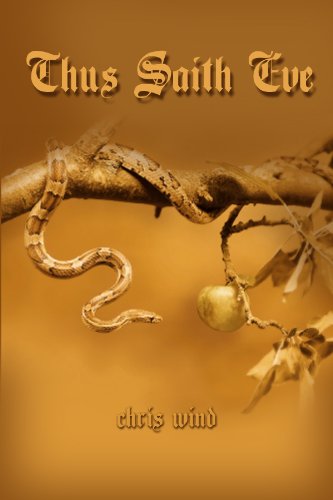
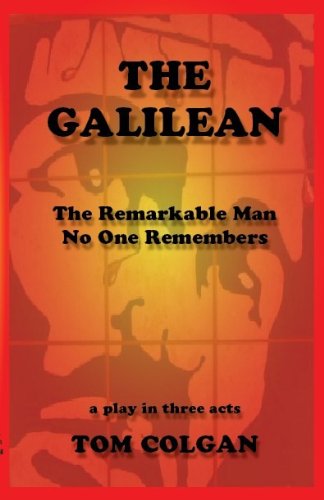
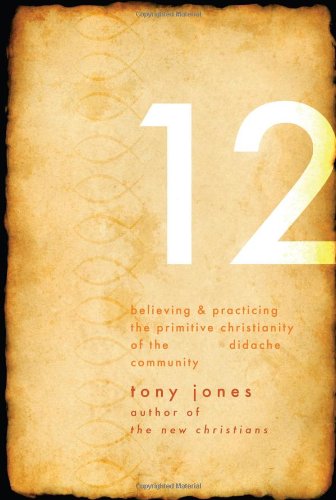
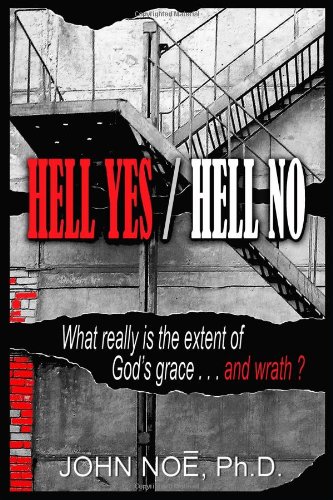
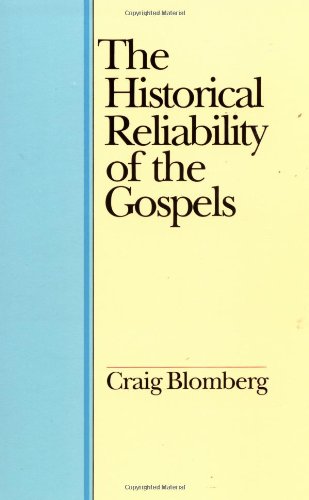









 354 Circles
354 Circles
 603 Goodreads Friends & Fans
603 Goodreads Friends & Fans

 Hello! I'm an author, historical Jesus scholar, book reviewer, and liberal Christian, which means I appreciate and attempt to exercise the humanitarian teachings of Jesus without getting hung up on any particular supernatural or religious beliefs.
The Bible is a magnificent book that has inspired and spiritually fed generations for thousands of years, and each new century seems to bring a deeper understanding of life’s purpose. This is true of not only Christianity; through the years, our age-old religions are slowly transforming from superstitious rituals into humanitarian philosophies. In short, we are growing up, and I am thrilled to be riding the wave.
I avidly read all thought-provoking religion titles. New authors: I'd love to read and review your book!
Hello! I'm an author, historical Jesus scholar, book reviewer, and liberal Christian, which means I appreciate and attempt to exercise the humanitarian teachings of Jesus without getting hung up on any particular supernatural or religious beliefs.
The Bible is a magnificent book that has inspired and spiritually fed generations for thousands of years, and each new century seems to bring a deeper understanding of life’s purpose. This is true of not only Christianity; through the years, our age-old religions are slowly transforming from superstitious rituals into humanitarian philosophies. In short, we are growing up, and I am thrilled to be riding the wave.
I avidly read all thought-provoking religion titles. New authors: I'd love to read and review your book!
 Hi! While Lee writes the articles and reviews the books, I edit, organize, and maintain the blog. The views expressed here are Lee's but I'm his biggest supporter! :-)
Hi! While Lee writes the articles and reviews the books, I edit, organize, and maintain the blog. The views expressed here are Lee's but I'm his biggest supporter! :-)
Connect With Me!